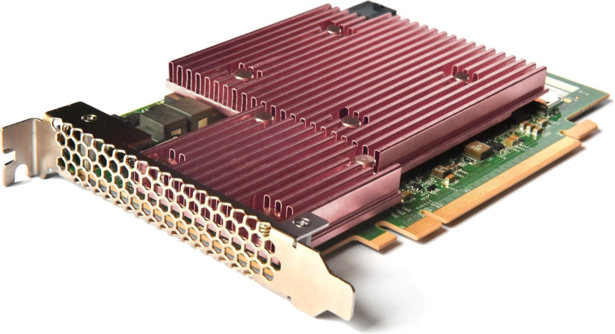 Lightbits Labs, a key contributor to NVMe/TCP, lands on the market with $50M in funding from Micron, Dell Technologies Capital and Cisco to accelerate the data center and cloud environments transformation into NVMe-based storage. I'm not surprised to see Cisco here looking for some storage opportunities linked to high speed networking.
Lightbits Labs, a key contributor to NVMe/TCP, lands on the market with $50M in funding from Micron, Dell Technologies Capital and Cisco to accelerate the data center and cloud environments transformation into NVMe-based storage. I'm not surprised to see Cisco here looking for some storage opportunities linked to high speed networking.The company is a champion of NVMe/TCP being one of the key contributors to the standard, I wrote a very short post when we discovered the company in 2017 following their presentation at FMS and an other one after FMS 2018. The idea is pretty obvious and straight forward with the same logic that iSCSI in the past, the enterprise transport chosen by enterprises is Ethernet with high-speed, low-latency equipments deployed and available on the market. It should be even more easy to use TCP today than it was at the time of iSCSI. Both approaches share the same model having to transport storage command set - SCSI and now NVMe - over a transport layer such TCP on top of Ethernet to expose a block storage interface. So the team has extended current NVMe over Fabrics based on FC and RDMA with IB, RoCE and iWARP with now TCP. The NVM Express standard body ratified the TCP extension in November 2018.
Lightbits Labs product, named LightOS, is a software-defined storage solution breaking the compute + storage or DAS model limitation with a disaggregated approach splitting the compute on one side and the storage on the other end with a new storage network logic running on TCP in the middle. Obviously why do we need to limit ourselves to the storage inside the box, same remark we had with SAN around 1995 for ones who were already in the industry at that time. FC was a big help for that but required a dedicated expensive networks with specific equipments.
 LightOS invite IT architects to decouple compute and storage and scale independently both entities. The beauty of NVMe/TCP is that the driver is included in Linux kernel 5.0 and above and you can use as well the Intel SDPK toolkit introduced here. It means that there is no need to install any agent or driver in each server connected to the storage, it's only target approach. It probably explains why E8, Apeiron, Excelero and Mangstor have and had limited adoption on that market but it was also in a recent past...
LightOS invite IT architects to decouple compute and storage and scale independently both entities. The beauty of NVMe/TCP is that the driver is included in Linux kernel 5.0 and above and you can use as well the Intel SDPK toolkit introduced here. It means that there is no need to install any agent or driver in each server connected to the storage, it's only target approach. It probably explains why E8, Apeiron, Excelero and Mangstor have and had limited adoption on that market but it was also in a recent past...The key element of LightOS is the Global Flash Translation Layer aka FTL, providing several key features such thin provisioning, data reduction, data striping across SSD, erasure coding, QoS per volume and auto-scaling. LightOS offers 200Gbps bandwidth, up to 5M IOPS with 4K random I/O with a dual socket 2U x86 server running Intel or AMD cpus. Of course a CLI is available and a RESTful API for management and monitoring.
The picture below show an exploded model that illustrates the parallelism of the architecture and the alignment of NVMe queues with TCP channels.
 At the same time, the company announced LightField, a PCIe Gen3 acceleration card as an option for LightOS, to boost throughput, erasure coding processing, provide compression and improve SSD endurance. For more demanding applications, the company recommends to associate LightField to LightOS.
At the same time, the company announced LightField, a PCIe Gen3 acceleration card as an option for LightOS, to boost throughput, erasure coding processing, provide compression and improve SSD endurance. For more demanding applications, the company recommends to associate LightField to LightOS.
The only missing features in the Lightbits Labs offering as of today are encryption, snapshot and replication and I'm pretty sure some of them will appear in the future in LightField.
We invite the reader to spend some time studying the presentation below, it was delivered during FMS 2018 and it's a very good content and update. We even see on page 24 a device with Lightbits logo, does it mean the company plan to release a storage array like E8, Apeiron, Mangstor or even Vexata or Pavilion and Toshiba with Kumoscale? We'll see... More recently Sagi Grimberg, chief software architect and co-founder at Lighbits and key contributor to the NVMe/TCP standard presented a webcast with Microsemi, you can find this online presentation here.




















0 commentaires:
Post a Comment